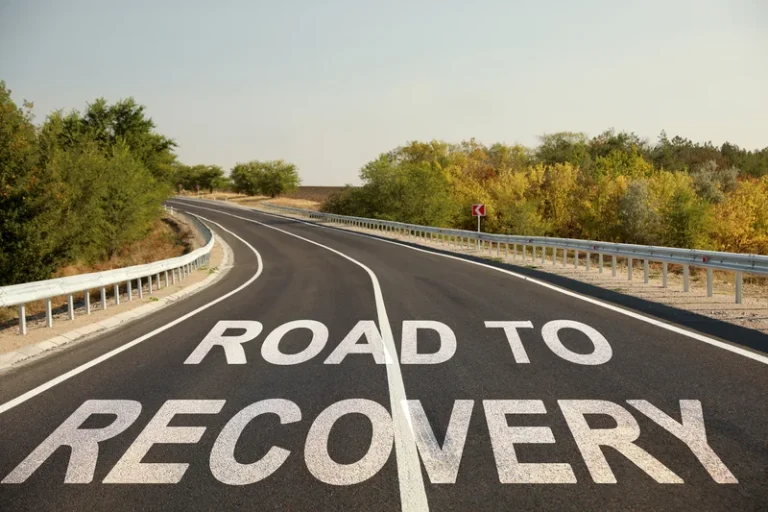
Developing a timely recovery plan that is frequently reviewed can enhance motivation and promotes positive actions in building recovery capital. The following section is intended to provide recommended best and promising practices for certified recovery residences under OASAS. These best practices should not be relied upon as a substitute for OASAS https://ecosoberhouse.com/ 14 NYCRR Part 860 or established Guidance requirements. Residents can be linked to community recovery supports, employment, education, and treatment. Physical recovery capital includes safe housing, reliable transportation, or access to healthy food. Recovery Capital refers to internal and external resources that can be drawn upon to initiate and sustain recovery from substance use disorder.
Associated Data

Supportive staff, education, and community resources can help residents develop a healthy perspective on financial literacy and money management. Recovery Residences will mobilize established relationships with key organizations in the community to assist the resident if they return to use. Relationship agreements with crisis, medical, mental health and substance use providers are a critical component in the recovery residence toolkit and should be called upon to assist the resident at these times. A recurrence or return to use is not a sign that the individual is ‘weak’ or a ‘failure.’ Rather, it represents the struggle to manage the cravings and urges to use illicit drugs or alcohol. Coping strategies and problem-solving knowledge and skills, combined with motivation and a sense of hope and purpose provide the recovery capital to continue a recovery path. As with any other chronic condition, substance use disorder can be addressed over time with the right mix of strategies.
From Darkness to Light – Personal Stories of Recovery Coaches
Examples of these relationships include recovery centers, houses of worship, medical, mental health, SUD treatment providers, employers, criminal justice, wellness supports, and housing providers. NARR prioritizes educating providers, residents, and the broader community about the recovery process, the role of recovery residences, and the importance of standards to enhance support for recovery journeys. Approximately 13% of identified residences were not included in our analyses because we were missing information to identify the county where they were located. Residences sourced from the Oxford House website and the Treatment Locator had the most complete data, so findings on the distribution and availability of recovery housing may best apply to these residences. More than half (57%) of the residences with missing locating information were members of NARR Affiliates, some of which did not collect this level of detail on their membership or could not share it with other entities.
Resident Return to Use

Residents should agree to not reveal to anyone outside of the residence the name, identity, or description of another resident. Additionally, residents should agree not to discuss the content of conversations or groups with anyone outside of the residence. This includes sharing information about the recovery residence at 12-Step, or other recovery-related meetings, that residents attend outside heroin addiction of the residence. This information might include details of a resident’s lifestyle, family, health, or care needs which they want to be kept private. The confidentiality of all residents regarding verbal and written information will be protected.
Opportunities to enhance human capital may be more readily available in recovery housing settings that provide services to expressly enhance recovery knowledge and skills as well as services to address mental health issues and other skills essential for optimal negotiation of daily life. They are alcohol and illicit substance-free recovery housing that utilize house rules and peer accountability to maintain safe and healthy living environments. Senior residents, appointed by the owner/operator to serve as the head of household, are typically called the House Manager. To serve higher needs/lower recovery capital populations, such as transition aged youth (e.g., youth years of age) with opioid use disorders, some Level II’s provide recovery support services and life skills development but at a lower intensity than Level III’s. In its working definition of recovery, SAMHSA recognized the importance of “home” or having a safe and stable place to live as critical to supporting a lifestyle in recovery (Substance Abuse and Mental Health Services Administration, 2011). Recovery housing provides this stability and is one of the more well-researched recovery support services (Laudet & Humphreys, 2013).
- It’s crucial to consult with a healthcare professional or treatment center to assess your individual needs and determine the most suitable recovery residence option for you.
- The research team would also like to acknowledge the recovery residence operators who make information about their recovery residences publicly available or otherwise contributed to the NSTARR database.
- Emergency management plans should be maintained and updated in order to prepare for, respond to, and/or recover from an internal or external emergency that may present an immediate danger to staff, residents, and/or property.
- As no such resource existed, we compiled information from a variety of sources and cataloged individual residences and the organizations that operate them.
- The following section is intended to provide recommended best and promising practices for certified recovery residences under OASAS.
Colorado Agency for Recovery Residences Guidebook and Best Practices

As recovery residences are non-clinical recovery support programs, operators may not offer treatment, medication management, or other clinical services. They should develop and abide by residence policies on being good neighbors in the community, including neighborhood courtesy rules, and guidelines for addressing disputes and concerns in the neighborhood. Operators abide by all legal statutes referenced in OASAS 14 NYCRR Part 860, as well as all state, local, municipal, and/or county housing laws.
- In addition to providing needed support to residents, staying in recovery housing also provided respite from worry and reassurance to family members.
- The consistency of core elements across certified residences can provide peace of mind to residents, families, neighbors, legislators, and funders, without additional oversight.
- Find more information on peer supervision competencies (PDF) and information on certification of peer supervision professionals (PSP).
- These homes provide a safe haven where individuals can receive support, guidance, and encouragement from peers and professionals alike.
1. Need for routine collection of information on recovery housing

Safe, quality housing that operates with a set of standards and a code of ethics that is verifiable by data collection legitimizes the essential work that recovery residences perform. There are various types of recovery residences, each with different levels of supervision and support. Some may offer more structure and rules, such as mandatory drug testing and curfews, while others provide more autonomy. Regardless of the type, the common goal is to create a stable environment where individuals can focus on maintaining their sobriety and developing life skills necessary for long-term recovery. This self-directed plan is stated in the individual’s voice and is clearly understood by the person, staff, and peers in the recovery residence residence. It is suggested that the residence facilitate a forum wherein each resident’s recovery plan is presented to the community (with their permission) to receive support, input, and mutual accountability, actualizing the social model.
3.1. Administrative data
One study showed a cost savings of $29,000 per person compared to returning to the community without this recovery support. Research also indicates that recovery residences may add to the quality of life in a neighborhood because residents often help neighbors with chores and participate in local community events. Certified Peers use knowledge acquired through lived experience related to substance use to support the recovery goals of individuals who use drugs and/or alcohol.
